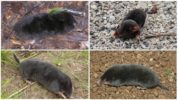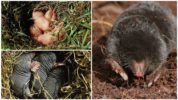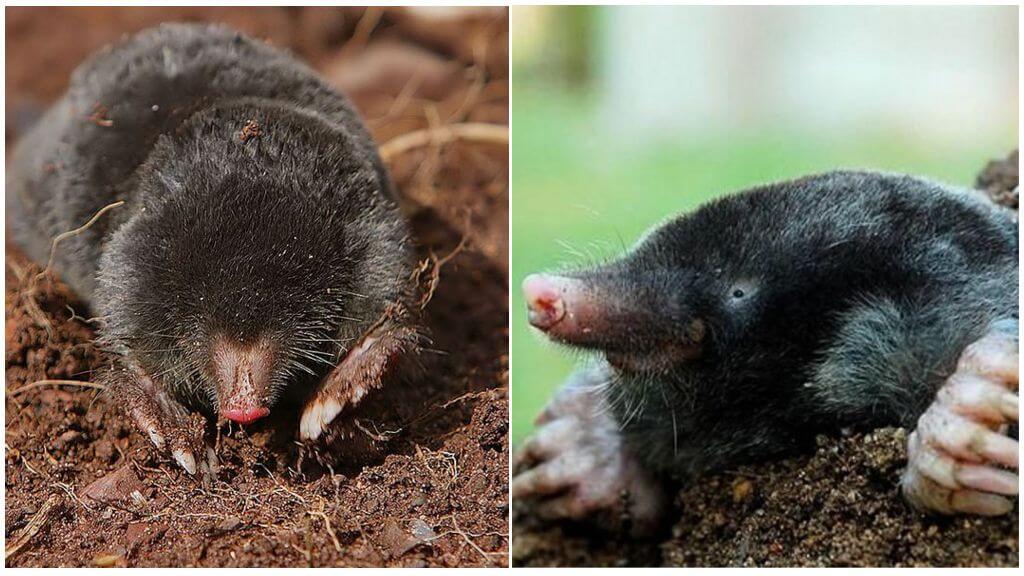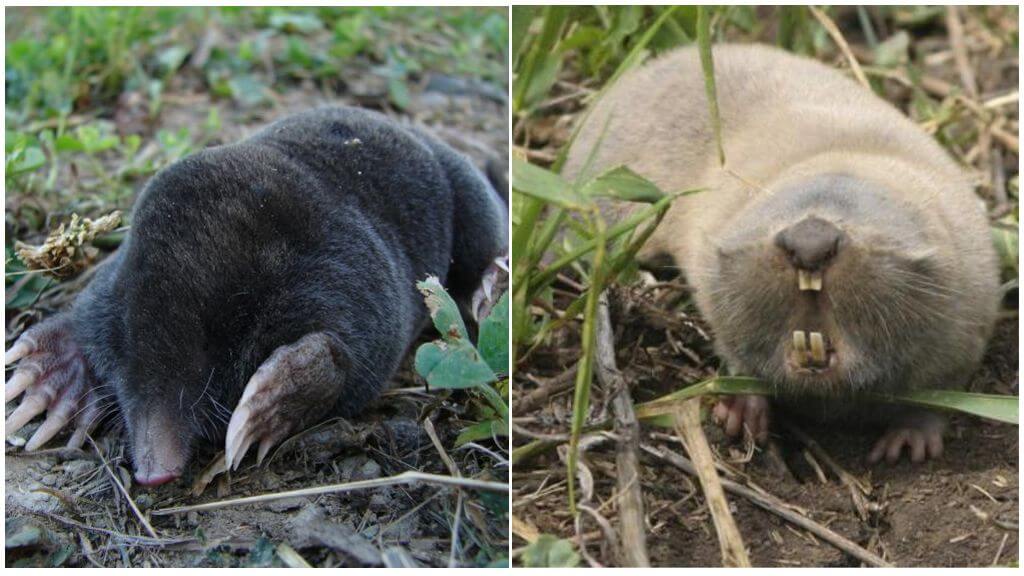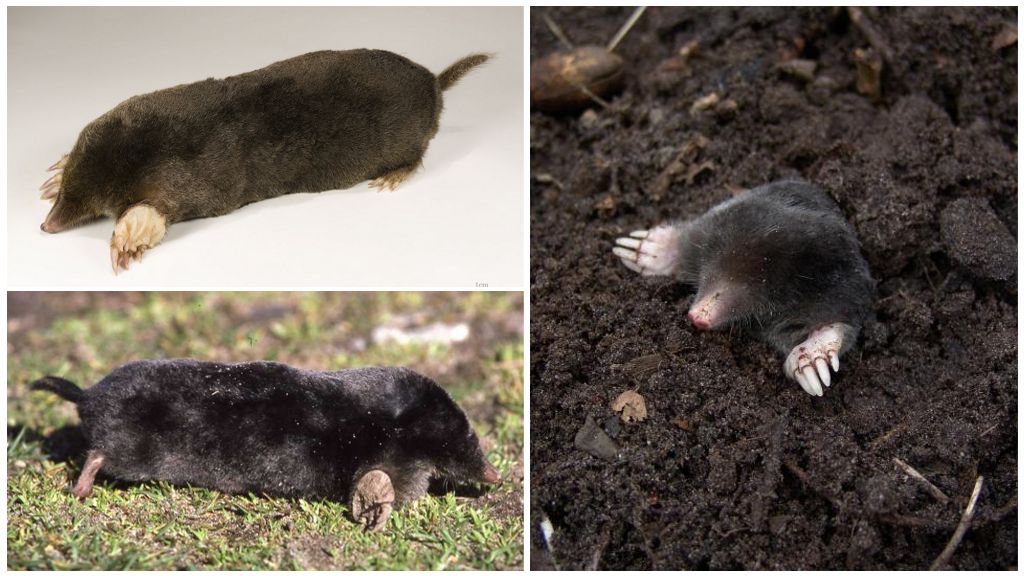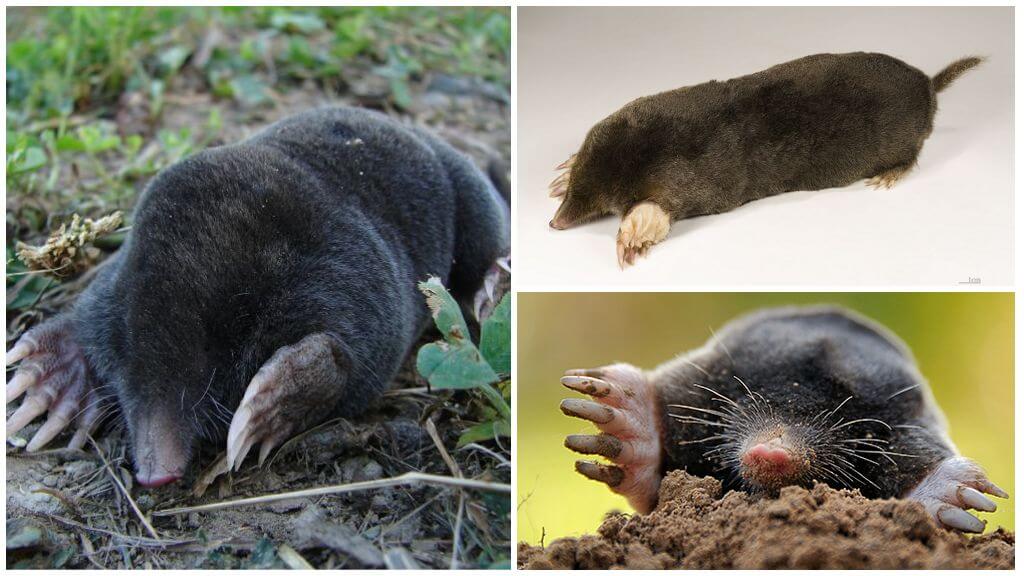- Mole species
- Mole lifestyle
- Mole
- Mole reproduction
The mole family is distributed throughout Eurasia and North America. In America, moles appeared during the time of the Beringian Bridge, since they are absent in South America. This could only happen if, at the time of the mole migration to the neighboring continent, South America was separated from the North Strait. The sizes of moles vary from 5 to 21 cm in different species. The weight of the animal depends on the size: 9-170g. The most familiar animal in Russia mole, he is European, has a length of 12-16 cm and weighs 70-119 g.
Russian species
There are 4 species of true moles in the Russian Federation:
- ordinary / European (Talpa europaea);
- Siberian / Altai (Talpa altaica);
- blind (Talpa caeca);
- Caucasian (Talpa caucasica).
In addition to the four species of true moles, in the Far East there are two more species from the family of moles, but belonging to the genus Moger: the big / Ussuri mohair and Japanese mohair. Like molesMoguers live underground and are very similar to the first because of the same lifestyle and nutrition. Of the external differences, the moghors have only a brownish-brown color. All other differences between moles and mohmers can be detected only by a specialist after opening the animal. If there is no scale, the animals in the photo cannot be distinguished from each other. "General" photo of a mole and a mohair below.
Interesting!
The Big Mohair is the largest representative of the mole family weighing up to 300 g and with a body length of up to 21 cm.
General description of animals from the genus mole:
- the body is cylindrical elongated with short fur;
- forepaws shovel-shaped, with powerful claws;
- claws are strong, flat;
- hind legs short, weaker than forepaws;
- the skull is small, cone-shaped when viewed from above and narrow straight when viewed from the side;
- the nose of the mole is transformed into a small proboscis;
- there are no auricles;
- eyes are underdeveloped in all types of moles, some are covered with leather film.
The number of teeth in the mouth of a mole varies among different representatives. And this is the main feature by which you can determine the type of animal.
The peculiarity of the fur of all moles is that it grows strictly up. This direction of hair growth allows the animal to equally easily move in the underground passages, both forward and backward. The hairs are laid so as to facilitate the movement of the animal.
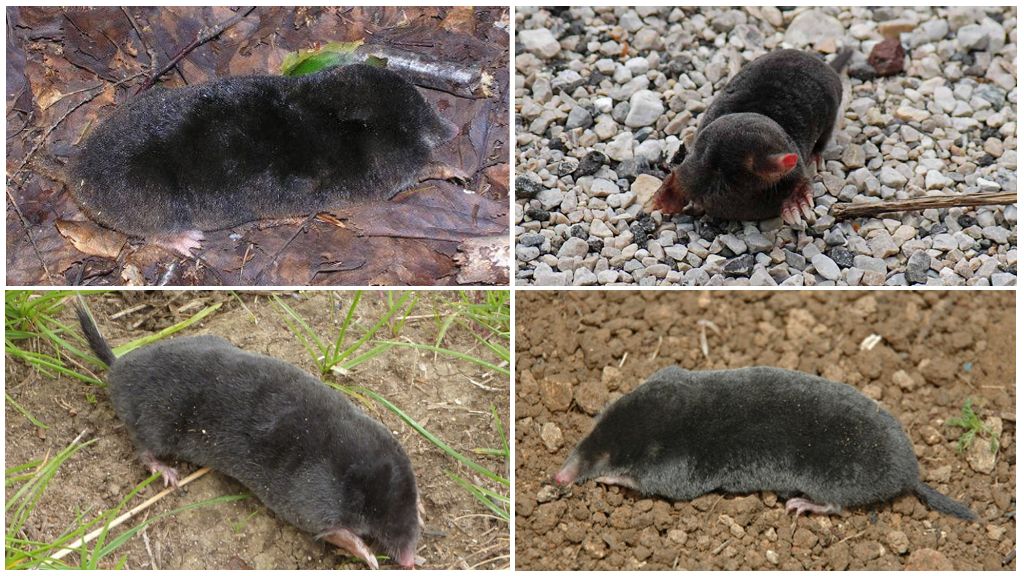
European / Ordinary
The range of the European mole is almost all of Eurasia: in the north, the border passes through the taiga, and in the south along the forest-steppe. The western border is the Atlantic Ocean, the eastern border is the Lena River basin.
- The animal is 12-16 cm long and has a short tail (average 3 cm).
- Average weight: 70-119 g.
- The European mole's eyes are noticeable. Their size is about 0.5-1 mm.
- Color matte black. The coat on the abdomen is slightly lighter than the main color. Young animals are more dull in color.
Interesting!
The hairs on the tail perform a tactile function like vibrissae, facilitating the mole to move backwards.
Altai / Siberian
In this animal, sexual dimorphism is more pronounced than in the common mole.
- Females 13-17 cm long and 70-145 g weigh, males 13.5-19.5 cm and 75-225 g respectively.
- The eyes are better developed than the European species and even have moving eyelids.
- Solid color may be lead gray, or black with a brown tint.Dark individuals predominate in the mountainous regions, and gray individuals in the plains.
On a note!
The Siberian mole has valuable fur, the length of which in winter reaches 12 mm.
Habitat - the western and middle part of Siberia.
Blind / Small
The smallest of the Russian representatives of moles. Length 8-12 cm, tail 2-3 cm. Weight up to 30 g. Eyes closed with thin skin. Color from black to dark brown.
The habitat is the Caucasus. If the range intersects the range of the Caucasian mole, then the blind digs moves lower. The main diet of the mole- beetle larvae.
Caucasian
It looks like an ordinary one, but the eyes are hidden under the skin. Length 10-14 cm, tail 2.5-3.2 cm, weight 40-95 g. The fur is black.
The habitat is the Caucasian ridge and the surrounding area.
Lifestyle
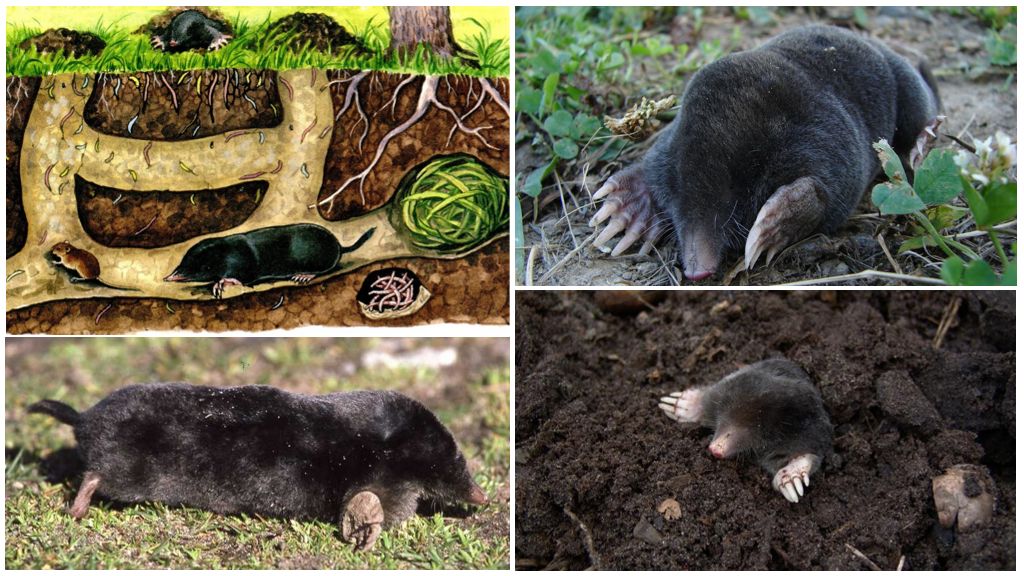
Moles - insectivorous animals, leading a year-round active lifestyle. The life of a mole in nature passes completely underground. Even female brings cubs in a hole at a depth of 1.5-2 m. Due to the inaccessibility of wormholes, everything about moles is not even known to scientists studying these animals.
The environment where moles live, presupposes the mandatory presence of loose moist earth. Depth mole only 5-20 cm. They are located in the upper loose soil layer, as the mole digs the ground in paws. Moles cannot gnaw passages in the earth, by this they differ from rodents mole rats. Animals push the excess soil to the surface, forming moleholes - holes, when hit in which you can break your leg.
The mole will climb to the depth in three cases:
- Dig a passage under a strip of trodden earth and for reproduction. If the animal digs a course under a pedestrian path, it can go deep into the ground by 0.5-1 m.
- In order to protect the offspring, the female arranges a maternity ward under the roots of trees at a depth of 1.5–2 m.
- Food went too deep into a drought.
In the absence of an urgent need to dig. moles at what depths live, and at that tunnel their tunnels. The usual shallow depth of pass allows animals to breathe and ventilate their homes calmly.
Interesting!
The Caucasian species, in search of food, is buried to a depth of 1 m.
In nature, moles bring more benefits and harm from them is minimal. Mole passages promote soil aeration, which improves plant growth. But the owners of the gardens see them as their enemies and are constantly trying fight moles.
Why do we need such moves
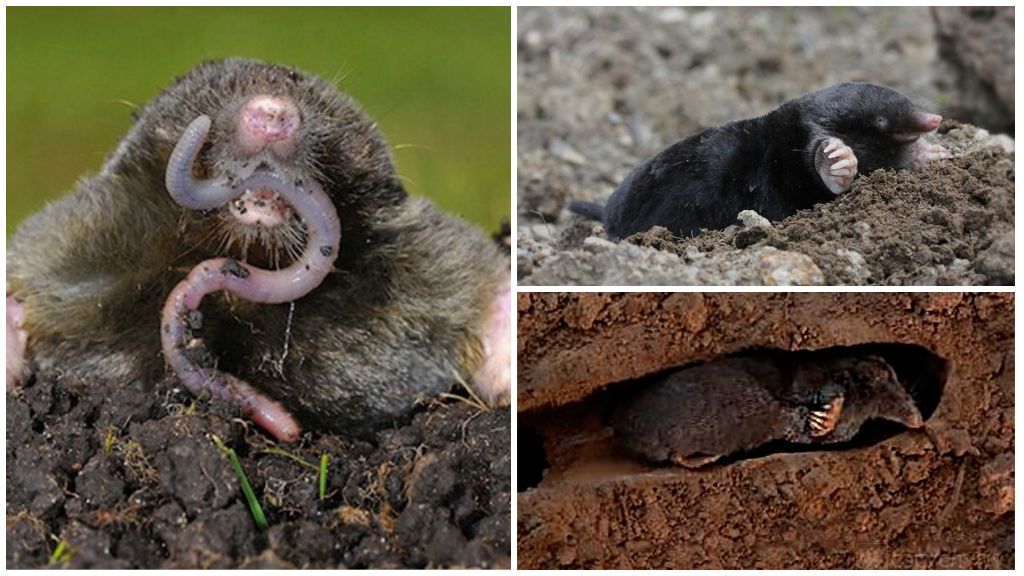
Moles make feed passages for themselves in the surface layer of the soil because their main food is earthworms. These invertebrates eat rotting organic matter, which is found only in the surface layers. For the same reason, moles settle in areas with moist soil. In addition to worms, moles eat the larvae of pests that live in the ground. Pests prefer the delicate roots of cultivated plants, and earthworms dehydrated garden soil. Following their food, moles also come to the country house and garden.
Interesting!
On occasion, a mole can eat a mouse-vole that has fallen into the feed course.
Adult individuals have a nasty character and do not tolerate rivals in their feed area. They can eat a weaker relative or cub.
An animal eats 50-60 g of worms and larvae per day. Due to the high metabolism and significant energy consumption for digging moves, moles can go without food for no more than 14 hours. During a hunger strike they die of hunger longer than this time.
Contrary to misconceptions, these animals do not eat plant roots (they can be swallowed by accident) and would even be useful. But in pursuit of prey, they twist the plantings on the beds, ruining the seedlings. Because of this, summer residents do not like the underground inhabitants.
Moles do not fall into hibernation, but in winter it is difficult for them to get food, since earthworms go deep. Moles cannot bury at such a depth. And above the ground freezes to the state of stone.
To survive the winter period, the animals make stocks of earthworms. The mole can only eat live prey. Animals solve the problem of preserving winter reserves brilliantly: they bite off the heads of worms.A headless earthworm does not die, remaining alive throughout the entire cold period. But the worm cannot escape either. These invertebrates are not able to move without a head.
Breeding
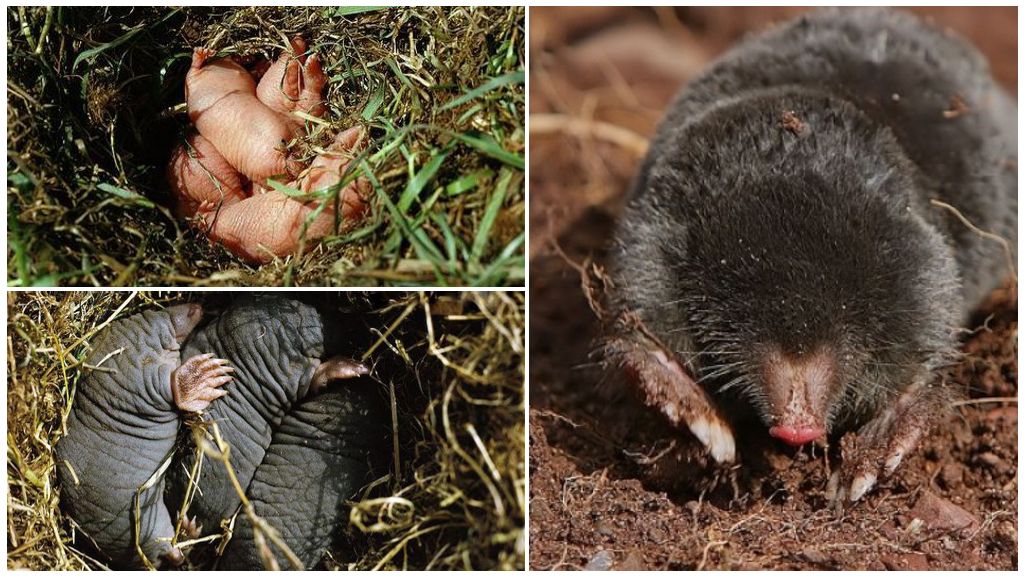
Moles breed once a year. The gestation period of pups in different species is different. The Siberian mole has a period when the embryo stops developing for a while. The breeding period of "Russian" moles is different:
- European mates in March-April. The female brings offspring after 35-40 days. Young blind naked. In a litter 3–9 moles weigh 2–3 g. Only a fifth of adult moles can bring a second litter in the summer. At 1.5 months, the young leaves the family.
- The Siberian mates in June, but the female gives birth to the next year in April — May, since the Altai species has diapause and, in total, mole rats last 270 days. There are 3–6 cubs in the litter. In June, young animals classify themselves as adults and leave the nest. But puberty in females occurs only after a year, in males in two.
- Blind mates in February - March, still under the snow. Krotikha wears offspring 30 days. In the litter from 1 to 5 cubs. To the size of an adult, these animals grow in a month, after which they leave the nest.
- Caucasian also mates in February. The female brings the mole in March. In the brood of 1-3 cubs. After 40 days they become independent.
With such a small number of cubs and breeding only once a year, the number of moles in the territory can increase very quickly. Since the mole rat gives birth deep underground, its predators are not threatened by any predators and all cubs survive.
On a note!
Until the mole crawled to the surface, it had no natural enemies.
But how long a representative of moles lives depends on its type. The life span of an ordinary mole is 4–5 years, Altai - 5 years, blind 3-4 years, Caucasian 5 years.
Danger to humans
Attack a person will not. The danger to humans is unlikely due to a very high metabolism. An animal with a dangerous disease will die before it "finds" a person. And the question "does the mole bite" remains open. Theoretically, yes, since he has teeth. Almost even the moles caught do not express a desire to bite the one who caught them, but they make sounds similar to rat squeaks. Either from panic, or trying to scare the "predator".
